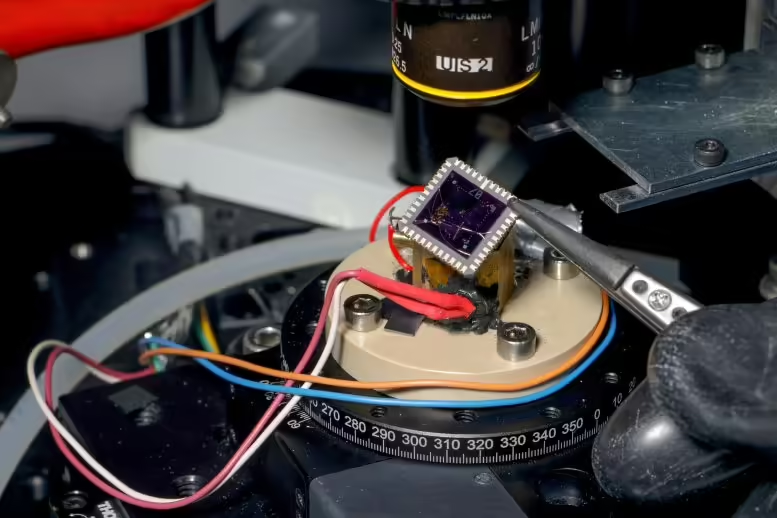EPFL engineers have developed a device that can efficiently convert heat into electrical voltage at temperatures even lower than those found in space. The breakthrough could significantly advance quantum computing technology by removing a major hurdle.
To perform quantum computing, quantum bits (qubits) must be cooled to temperatures in the millikelvin range (about -273 degrees Celsius) to reduce atomic motion and minimize noise. But the electronics used to control these quantum circuits generate heat that is difficult to dissipate at such low temperatures. As a result, most current technologies must separate quantum circuits from their electronic components, leading to noise and inefficiencies that hinder the development of larger quantum systems outside the laboratory.
Researchers at the Laboratory of Nanoscale Electronics and Structures (LANES), led by András Kisch from EPFL’s Faculty of Engineering, have created a device that not only operates at extremely low temperatures, but also operates at room temperature with an efficiency comparable to existing technologies.
“We are the first to create a device that matches the conversion efficiency of today’s technologies, but operates at the low magnetic fields and ultra-low temperatures required for quantum systems. This work is truly a step forward,” says LANES doctoral student Gabriele Pasquale.
The innovative device combines the excellent electrical conductivity of graphene with the semiconducting properties of indium selenide. Only a few atoms thick, the object behaves like a two-dimensional object, and this new combination of material and structure gives it unprecedented performance. The achievement was published in: Nature Nanotechnology.
Using the Nernst effect
The device uses the Nernst effect: a complex thermoelectric phenomenon that produces an electric voltage when a magnetic field is applied perpendicular to an object with a variable temperature. The two-dimensional nature of the laboratory device allows the efficiency of this mechanism to be controlled electrically.
The 2D structure was fabricated at EPFL’s Center for Micro-Nanotechnology and LANES Laboratory. The experiments involved using a laser as a heat source and a special dilution refrigerator to reach temperatures of 100 millikelvin—lower than those in space. Converting heat into voltage is usually extremely difficult at such low temperatures, but the new device and its use of the Nernst effect make it possible, filling a critical gap in quantum technology.
“If you think of a laptop in a cold office, the laptop will still heat up while you are working, causing the temperature in the room to rise. Quantum computing systems currently do not have a mechanism to prevent this heat from affecting the qubits. Our device can provide the necessary cooling,” Pasquale says.
Pasquale, who is a physicist by training, emphasizes that this research is important because it sheds light on the conversion of thermoelectric energy at low temperatures, a phenomenon that has so far been little studied. The LANES team believes that their device could be integrated into already existing low-temperature quantum circuits, given the high conversion efficiency and the use of potentially technologically advanced electronic components.
“These findings represent a major advance in nanotechnology and promise the development of advanced cooling technologies needed for quantum computing at millikelvin temperatures,” Pasquale says. “We believe this breakthrough could revolutionize cooling systems for future technologies.”













